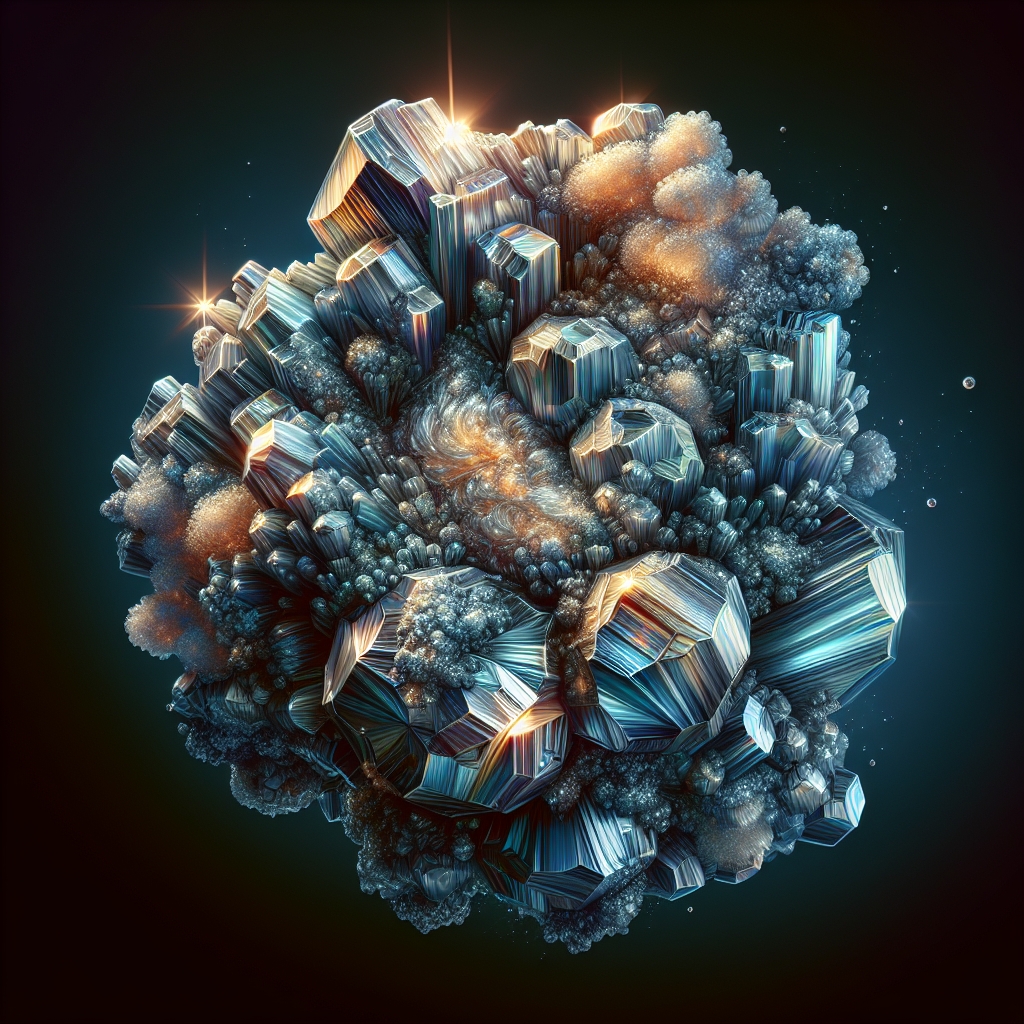The world of minerals and stones is vast and filled with countless wonders, each with its unique properties, uses, and mysteries. Among these, erbium stands out as a particularly fascinating element. This rare earth metal, with its silvery-white appearance and remarkable characteristics, has captured the attention of scientists, jewelers, and technology enthusiasts alike. In this article, we will delve into the lustrous world of erbium, exploring its properties, applications, and the intriguing role it plays in both nature and technology. From its geological origins to its use in modern devices, erbium represents a perfect blend of natural beauty and scientific innovation.
Chapter 1: Unveiling Erbium – A Geological Perspective
Erbium is a member of the lanthanide series, a group of 15 metallic elements found in the f-block of the periodic table. It was discovered in 1843 by Swedish chemist Carl Gustaf Mosander, who extracted it from the mineral gadolinite. The element was named after the village of Ytterby in Sweden, where large deposits of rare earth minerals were found. Despite its early discovery, erbium, like other rare earth elements, remained relatively obscure for many years due to the complexity of separating it from other lanthanides.
Geologically, erbium is not found in its free form due to its highly reactive nature. Instead, it occurs in a variety of minerals, including xenotime, euxenite, and, most notably, monazite and bastnäsite. These minerals are the primary sources of rare earth elements and are mined in several countries, including China, the United States, Australia, and India. The extraction and refinement of erbium from these minerals require sophisticated techniques, making it a valuable and sometimes expensive element.
The distribution of erbium in the Earth’s crust is uneven, with the highest concentrations found in specific mineral deposits. This uneven distribution, combined with the element’s desirable properties, has led to a competitive market for erbium and other rare earth metals. As a result, the mining and trading of these elements are subject to geopolitical tensions and environmental concerns.
Chapter 2: The Remarkable Properties of Erbium
Erbium’s most notable property is its striking pink coloration when oxidized, which makes it highly sought after for use in glasses, ceramics, and especially in the creation of pink-colored gemstones. This unique coloration is due to the element’s electron configuration, which allows it to absorb and emit light in specific wavelengths. Additionally, erbium has excellent mechanical and thermal properties, making it useful in various industrial applications.
On the atomic level, erbium has an atomic number of 68 and an atomic weight of 167.26. It has a high melting point of 1529 degrees Celsius and a boiling point of 2868 degrees Celsius. These properties, combined with its resistance to corrosion and excellent electrical conductivity, make erbium an invaluable component in many high-tech devices.
One of the most fascinating aspects of erbium is its role in the field of optics. Erbium-doped fiber amplifiers (EDFAs) are a critical technology in fiber-optic communication systems, allowing for the transmission of information over long distances without significant loss of signal quality. This technology relies on the unique ability of erbium ions to amplify light, making it possible to send data across continents and oceans at the speed of light.
Chapter 3: Applications and Future Prospects
The applications of erbium are diverse and impact various sectors, from telecommunications to medicine. In addition to its use in fiber optics, erbium is also employed in the manufacturing of lasers. Erbium-doped lasers are used in medical procedures, including dermatology and dentistry, for their ability to precisely target and treat tissue without damaging surrounding areas. This precision makes erbium-based lasers an invaluable tool in minimally invasive surgeries and cosmetic treatments.
Furthermore, the unique properties of erbium have potential applications in the development of new materials and technologies. Researchers are exploring the use of erbium in creating high-strength alloys, advanced nuclear reactors, and even quantum computing systems. The element’s ability to absorb and emit light in specific wavelengths also opens up possibilities for its use in solar energy conversion and light-emitting diodes (LEDs).
As technology continues to advance, the demand for erbium and other rare earth elements is expected to rise. This increasing demand presents both challenges and opportunities. On one hand, it underscores the need for sustainable mining practices and the development of recycling methods to recover rare earth metals from electronic waste. On the other hand, it highlights the potential for scientific breakthroughs and the development of new technologies that can further harness the unique properties of erbium.
In conclusion, erbium is a mineral enigma that embodies the intersection of natural beauty and scientific innovation. Its remarkable properties and wide range of applications make it a subject of fascination and importance in the modern world. As we continue to explore and understand the full potential of erbium, it is clear that this lustrous element will play a pivotal role in shaping the future of technology and industry.

